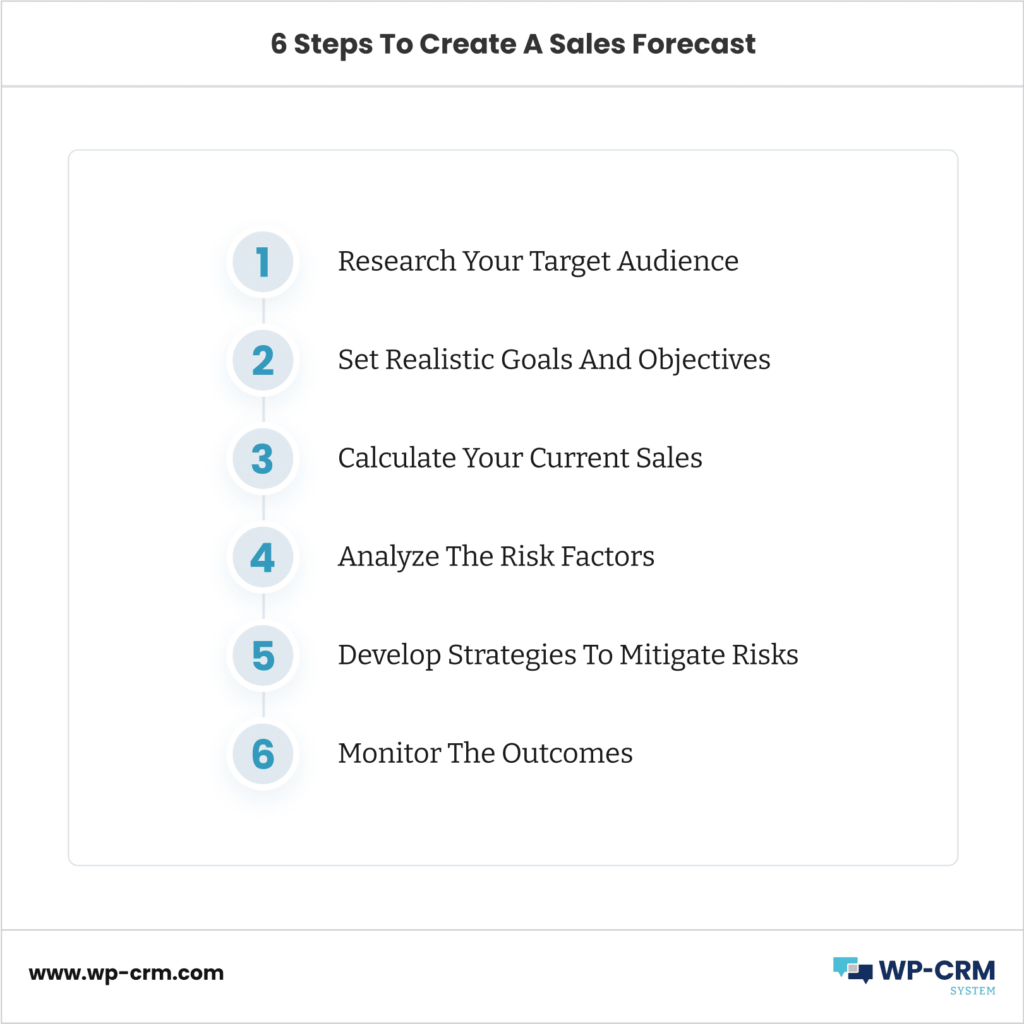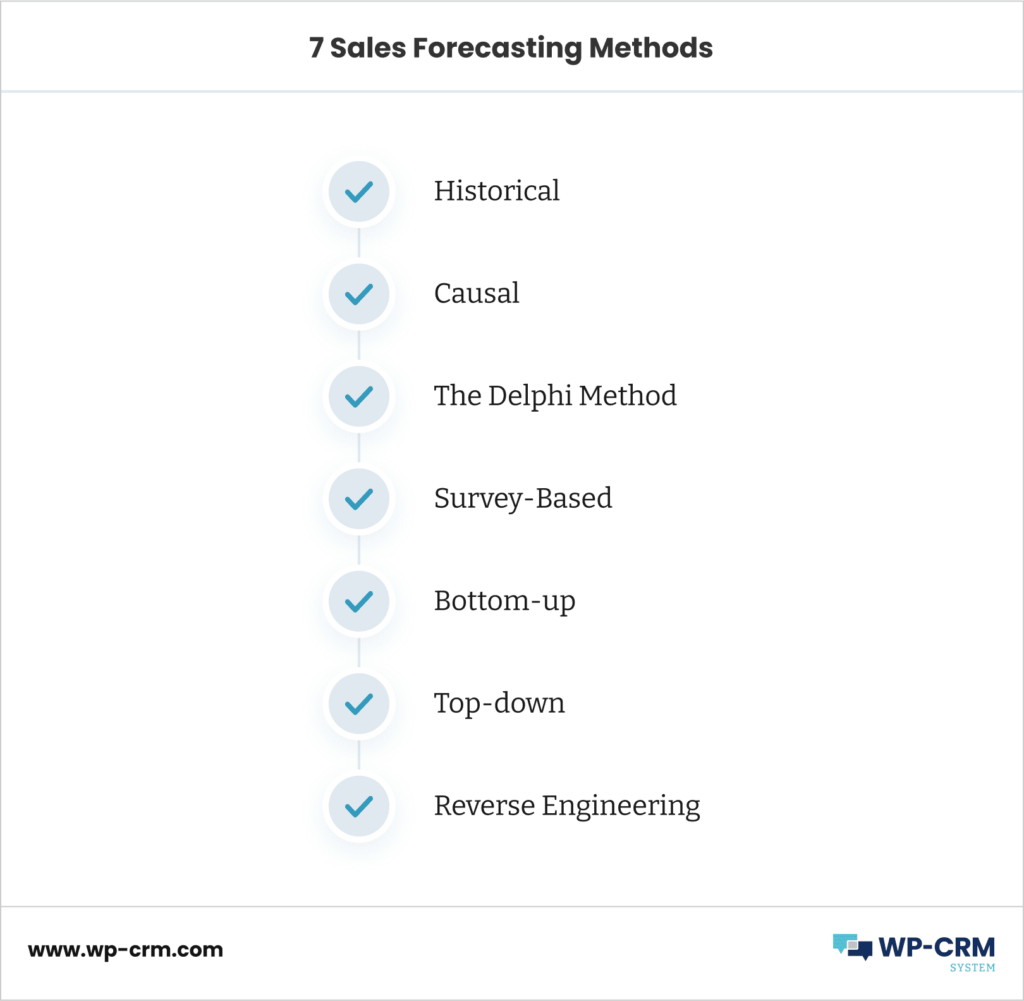How To Create A Powerful Sales Forecast
When running a business, it’s all about making the most out of your resources. Thus, a proper sales forecast to plan your cash flow and expenses can really make a difference in your revenues and profits. Better be prepared, right?
However, it is not that easy to predict future sales, especially if you are just starting up a business and tend to be too optimistic. There are a lot of factors that simply can’t be taken into account, such as weather conditions, new competitors hitting the market, economic and political fluctuations, a drop in customer satisfaction, etc.
To make sure our sales forecast is as accurate as possible, you need to know your customers in-depth and keep your communication intact. Tools like WP CRM help you track and manage your client relationship easily and transparently. If you act swiftly on customer feedback, you have a higher chance to predict your clients’ next steps and plan on what to do to meet their expectations and make the sale.
In this article, we will explain the essence of a good sales forecast and the factors that may affect it. Also, we will suggest 7 methods to make sure your sales projections for the future are as accurate as they can be. So, let’s dive in!
What Is A Sales Forecast?

A sales forecast is an estimate of how many products and services a business can expect to sell during specific periods in the future. It is used to calculate production costs, inventory levels, marketing strategies, staff needs, and more. A good forecast is essential for businesses that want to maximize profits and minimize risks.
Several factors can impact sales forecasts in any given industry. The overall economic climate, consumer behavior trends, and changes in the competition are all factors that can greatly affect sales projections.
Additionally, fluctuations in the supply chain, disruptions in production or distribution, and the emergence of new technologies can all impact sales forecasts.
Accurate forecasting requires a careful analysis of historical sales data, as well as an understanding of current market conditions and trends. By taking all of these factors into account, businesses can build a more robust and accurate sales forecast that can help them make informed decisions about their operations and profitability.
The Core Components Of A Powerful Sales Forecast
As we explained, a sales forecast is an estimate for the future and is not set in stone. However, these 6 essential steps can ensure as much accuracy as possible.

1. Research Your Target Audience
Start by understanding your target audience and the types of products or services they are most likely to purchase. Then, identify the current trends in their buying behavior and how these can be used to predict future sales.
2. Set Realistic Goals And Objectives
When it comes to sales forecasting, be realistic rather than optimistic. Include the number of products or services you expect to sell, the times they are likely to be sold, and the total revenue you will most likely generate from each sale.
3. Calculate Your Current Sales
Calculate your current sales by taking into account factors such as seasonality, discounts, promotional campaigns, customer loyalty, and more. This will help you get a better understanding of the general performance of your business.
4. Analyze The Risk Factors
Analyze any risks that may affect your sales in the future. These could include economic downturns, changes in consumer behaviour, new competitors entering the market, and more.
5. Develop Strategies To Mitigate Risks
Once you have identified the risk factors, you can develop strategies to mitigate them. For example, invest in marketing campaigns or staff training to improve customer satisfaction and increase your sales.
6. Monitor The Outcomes
Once your plans are in place, monitor the outcomes and make sure that your forecasts are accurate. This will help you adjust your strategies as needed and ensure that your business is meeting its goals.
7 Sales Forecasting Methods
There are different sales forecasting methods you can apply the above mentioned steps, depending on the circumstances. Here are the most popular ones:

Historical
Leveraging past performance is an effective way to make informed decisions about your business – but only if you have a sufficient data set. Companies with one or more years of operation can draw upon weekly, monthly, quarterly and year-long trends; while fledgling businesses will likely not possess enough information for this approach to be meaningful.
Causal
This approach takes into account external factors that can have an impact on sales, such as customer demand for similar products, the economy, and even competitors’ activities. By analyzing these data points in combination with available historical information, businesses can create a more robust sales forecast.
Delphi Method
The Delphi method is a collective approach to forecasting that incorporates the opinions and experiences of multiple individuals. It can be particularly useful when the data available is limited, or when there are no clear trends in the market.
Survey-Based Forecasting
This involves gathering feedback from customers directly to better understand their needs and preferences. This method can be used to create a more accurate sales forecast, as companies can identify where customer demand is and tailor their strategies accordingly.
Bottom-up Forecasting
To create accurate and reliable sales forecasts, an effective approach is to start with the basic components of your business – such as no. of units sold x average cost per unit – then expand outwards accordingly if you have multiple locations or reps involved. The “bottom-up” method offers distinctive advantages beyond convenience; any slight changes in variables can be quickly recalculated into a revised forecast!
Top-down Forecasting
Top-down forecasting takes the opposite approach, by estimating total sales from a high-level perspective and then breaking them down into smaller parts. This method is most applicable when you’re looking to make decisions about long-term strategies or large investments.
Reverse Engineering
This involves analyzing current performance and using it as a basis for making future predictions. This method works best when you have clear trends in the market, such as consistent customer demand or seasonal fluctuations.
Wrapping Up
Creating an accurate sales forecast is essential for any business, as it helps them make better-informed decisions about their strategies and investments. By leveraging a combination of historical data, external factors and customer feedback, businesses can create reliable forecasts that will help them succeed in the long term. With the right approach to forecasting, companies can improve efficiency and increase their profits.
